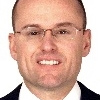02:21 PM
How Insurers Can Turn Change To Competitive Advantage
In the middle of the 2008 credit crisis that sank his once-booming Countrywide Financial Corp., former CEO Angelo Mozilo remarked, "Everyone looks to history to interpret the present and predict the future. This is unlike anything I thought even three months ago." Countrywide never saw it coming.

In every industry senior executives know they can't control the external operating environment. What they cando is optimize their behavior in response to change by understanding individual drivers of volatility and managing them aggressively. They can, in other words, build strategic foresight as a competitive advantage.
Insurers, and mature organizations in general, are led by people with deep expertise in their industry-- so deep it can sometimes be a barrier to understanding externals that may be reshaping, even unraveling their core business. Once an organization develops the habit of looking for these, the implications of change in the externals can be eye-openingly concrete.

[Insurance & Technology's Elite 8 honorees share a history of delivering innovative initiatives that have added value to the insurance business overall. Nominations for the 2014 Elite 8 are now open.]
For instance, A.T. Kearney recently completed a horizon scan and scenario-planning exercise for a large personal-lines insurer that wanted to rethink its U.S. strategy and install strategic foresight. The client was especially struck by the implication of demographic change, which is altering the economics of the insurance industry even as actuarial and sales models persist in long-held assumptions. Consider, for example, the forces driving the growth of multigenerational households in the United States and their implications for insurers.
Changes in immigration patterns and cultural outlooks are certainly part of the multigenerational dynamic. So are the currently constrained economic prospects of so many younger people. Baby Boomers, meanwhile, are aging and retiring, and that's driving an increased concentration of wealth in the United States in the 65+ cohort. They are buying insurance (among other goods and services) for their offspring and/or teenage grandchildren living under the same roof, and likely driving the same cars.
The rise of Millennials and their distinct purchasing influencers (as well as their perspectives towards privacy and loyalty) may create a risk of disintermediation by nontraditional players. Such players could include anyone who owns access to real-time information about customer behavior (Google and Facebook come to mind). Such businesses start with an advantage because they know so much about customers in up-to-the-minute detail -- solid gold from an insurer's point of view. And they reach millions of people at once through digital media.
Consumers are coming apart into less predictable groups. In response, companies are seeking new differentiators in customer segmentation to better understand what drives consumer behavior.
Towards a Multi-Dimensional View of Customers
Consider the breakdown of traditional segmenting structures. In the past, if an insurer knew a consumer went to X school, worked in Y profession and cared about such and such a cause, these would be an excellent basis for understanding a risk pool andfor getting the consumer's attention. Demographics alone do not tell insurers how, where, when or why consumers part with their money. This is accelerating a move beyond conventional segmentation models to multi-dimensional views of customers.
Like other industries, insurance is evolving toward an "always-connected customer" -- a customer who expects access to information at any time, in any place. They want to research, shop and transact seamlessly across all channels. They want community. They want information transparency, and they want it in an easily consumed form. That requires two-way tailored interactions, a strong brand identity and customized experiences. The integrated channel experience is emerging as the new normal. It will require insurers to evaluate the meaning of physical presence and integration across channels, including mobile and social media.
For some time now another external trend in the insurer's operating environment --climate change -- has been destabilizing risk models that have been in place for decades. Natural catastrophes are built into insurance models in ways that create accounting, reinsurance and other triggers to safeguard the core business. The bigger threat to profitability is from non-catastrophic weather that doesn't rise to the level of catastrophe, but only creates loss. Optimal behavior is to consider the whole package of climate-change risks. And that requires an expansive strategic imagination and alertness to opportunity that owes everything to foresight.



























